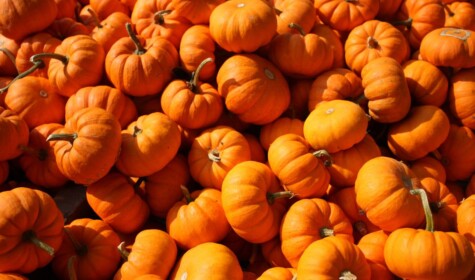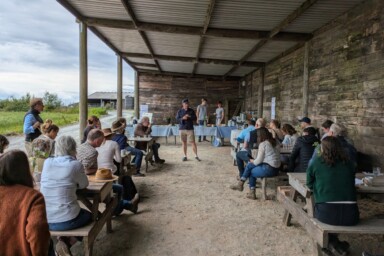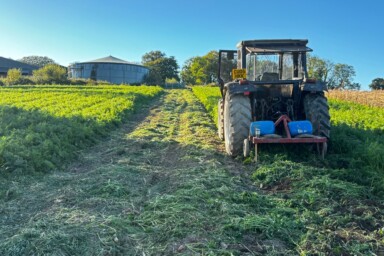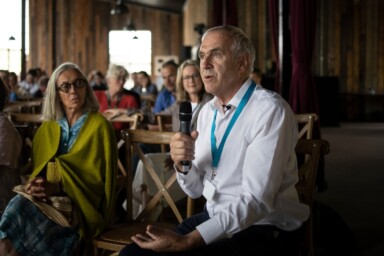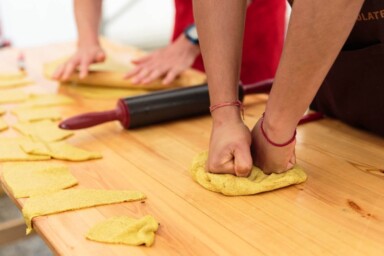The economic and environmental cost
The Halloween pumpkin is a long-standing tradition in the UK, almost as much as the US. Many households in the UK will have at least one carved pumpkin proudly on display in the window or on the porch of their house for the Halloween festivities. But what comes after Halloween is the real scare. According to Hubbub, a charity working to create positive environmental change, of the estimated 39.9 million pumpkins that were bought this year, 22.2 million will go to waste.
Not only are the 22.2 million pumpkins a staggering amount of perfectly edible food gone to rot that could have instead been used to create delicious pumpkin pies, stews, soups and so much more – but the money lost due to pumpkin waste is also staggeringly high, at an alarming £32.6 million. During an already worsening cost-of-living crisis, as more families turn to food banks, such profligacy borders on the immoral.
In addition to the economic cost and unnecessary waste, a pumpkin that ends up in landfill will decompose and release methane which has 20 times the warming effect of carbon dioxide.
The ‘Instagramification’ of pumpkins
The popularity of pumpkins and related practices such as visiting pumpkin patches, and ‘pick your own pumpkin’ as well as the general popularity surrounding Halloween, has seen a noticeable increase in the UK in recent years, both culturally and commercially. It’s been estimated that people in the UK will have spent over £600 million on the spooky festivities this year, including on food, costumes and decorations.
It’s become something of a tradition for people to visit pumpkin patches in the run up to Halloween, and pose proudly with their chosen pumpkin, before uploading to social media platforms like Instagram, Facebook and Pinterest. There are over 100 million posts that have used ‘#halloween’ on Instagram alone, 17 million for ‘#pumpkin’ and just over 4.3 million for ‘#pumpkinpatch ’. A quick Google search will prove just how incremental the pumpkin patch post is to an avid Instagram user’s October grid, with countless numbers of articles purely dedicated to captions alone.
It’s possible that aesthetic grading has an impact on pumpkin waste. Gavin Wren previously discussed the impact of aesthetic grading on carrots for the Sustainable Food Trust, whereby 24% – 50% are discarded based on their appearance, the highest of any other vegetable. During the ‘pick your own pumpkin’ process, consumers will likely pick the most aesthetically pleasing, roundest, plumpest and brightest. Just as social media has influenced people to visit pumpkin patches and share their beloved jack-o-lanterns online for their followers to see, apps like Instagram also benefit from aesthetic grading. It’s not enough that someone has been to a pumpkin patch, but they must also pose with the perfect pumpkin – no bumps or scrapes.
Pumpkins, however, are not the only popular fruit essential to Halloween activities, apple bobbing is also a well-known game that many people take part in each year. Though the research and statistics on food waste in relation to apples around this time of year are much scarcer and harder to come by, 800,000 apples are reportedly thrown away every day in the UK, with this figure likely increasing during the Halloween period when apples are disposed of, once finished bobbing. However, infectious disease experts have previously spoken about the health concerns linked to playing the popular game amid the presence of COVID-19, likely warning many people off taking part
When it comes down to the root of food waste, it’s important to highlight that this is not simply the fault of the consumer. As Edd Colbert previously discussed in an article for the Sustainable Food Trust about the accountability of food waste, supermarkets must take responsibility for the role that they play in this cycle. Food distribution charities reported how 200,000 tonnes of surplus food intended for hungry families goes to waste as supermarkets have restricted who their suppliers give their food to.
A solution to pumpkin waste
The solution to the mass of food waste at Halloween includes re-education and spreading information around what to do with pumpkins once the festivities are over. Only 59% of people are aware that pumpkins are edible – proof that these have become such a novelty that people have actually forgotten, or don’t know, that the pumpkin was originally just a fruit intended for consumption, not modification.
Fruit and vegetables already produce the most amount of waste of any food, with Halloween only adding to this. With this said, we should try to be especially mindful with what we do with our jack-o-lanterns once the spooky season is over and try to find solutions for these leftovers where possible. If you’re not so familiar and comfortable in the kitchen, try out some recipes from MOB kitchen. They’re an online food platform with hundreds of easy and affordable recipes – perfect for making use of those pumpkin remains. Their creamy pumpkin pecan risotto sounds especially delicious, or perhaps you’re up for something a little sweeter and want to try their spiced rum pumpkin milkshake.
There are also great online resources like Love Food Hate Waste which feature informative tips and guidance for reducing food waste, including food habits to adopt as part of your weekly routine. Hubbub has a Pumpkin Rescue campaign that is an especially helpful resource around this time of year, including educational statistics, guidance on which parts of a pumpkin can be eaten, and inspirational recipes.
All this is not to say that carving pumpkins and similar activities shouldn’t take place, but instead it’s about being aware of the amount of food waste that’s produced as a result of this, and how we can all play a part in reducing this number and enjoying pumpkins for their dual purpose: as a spooky decoration and the delicious fruit that they are!
